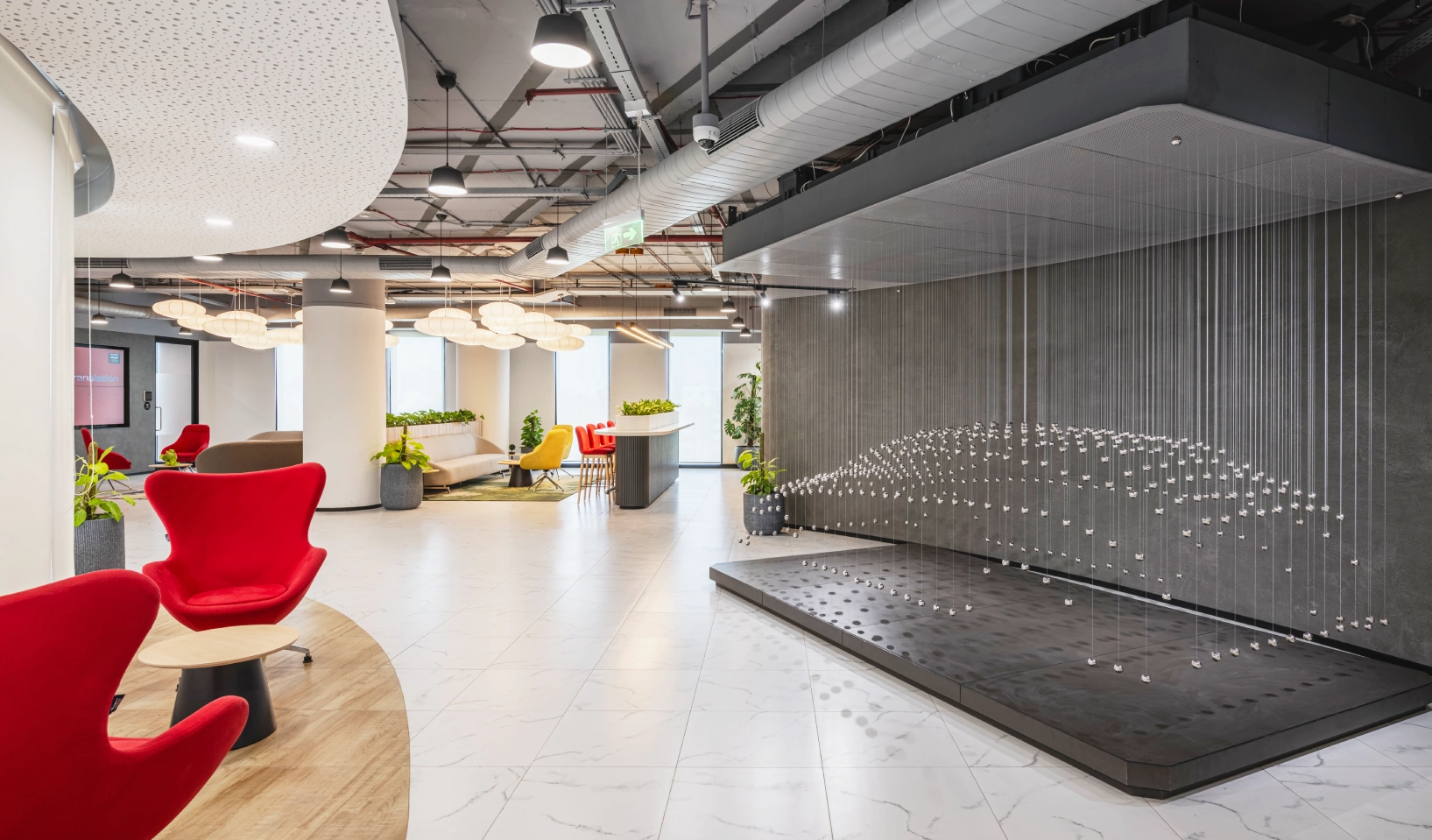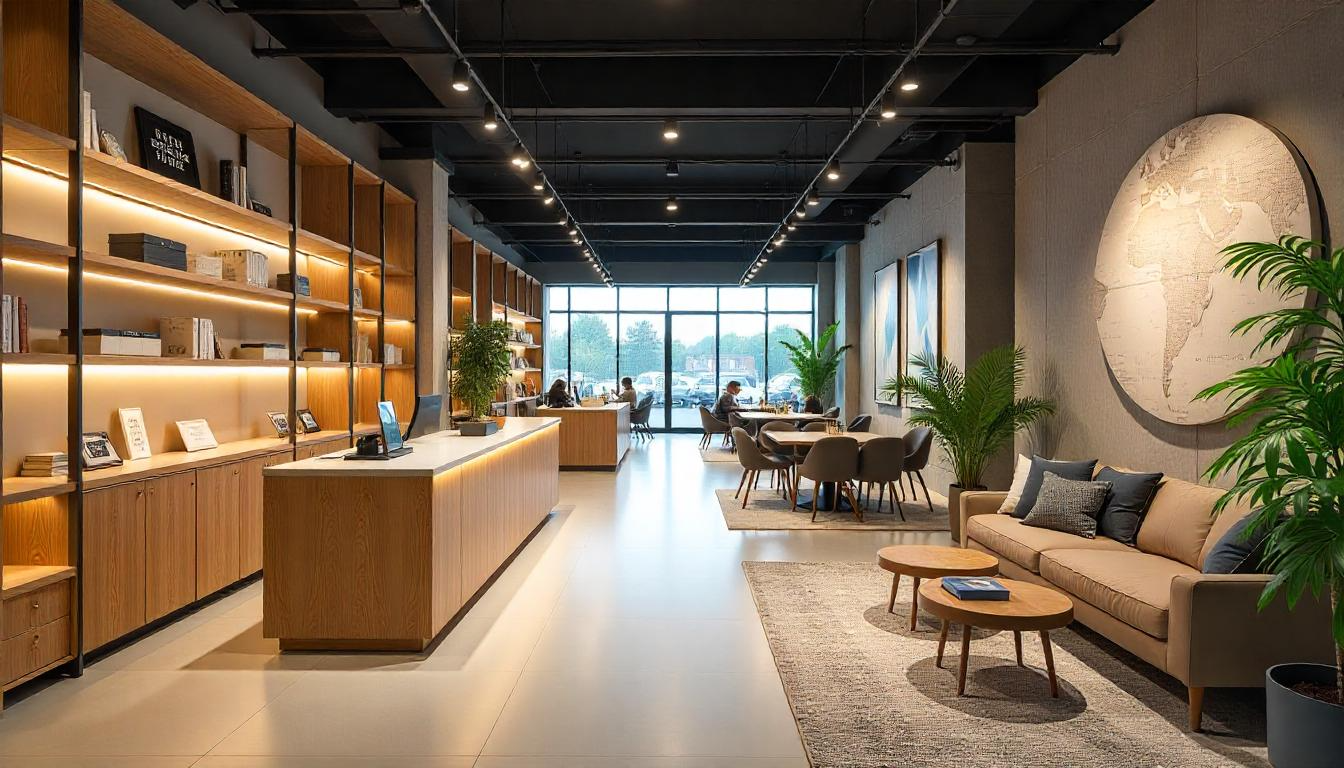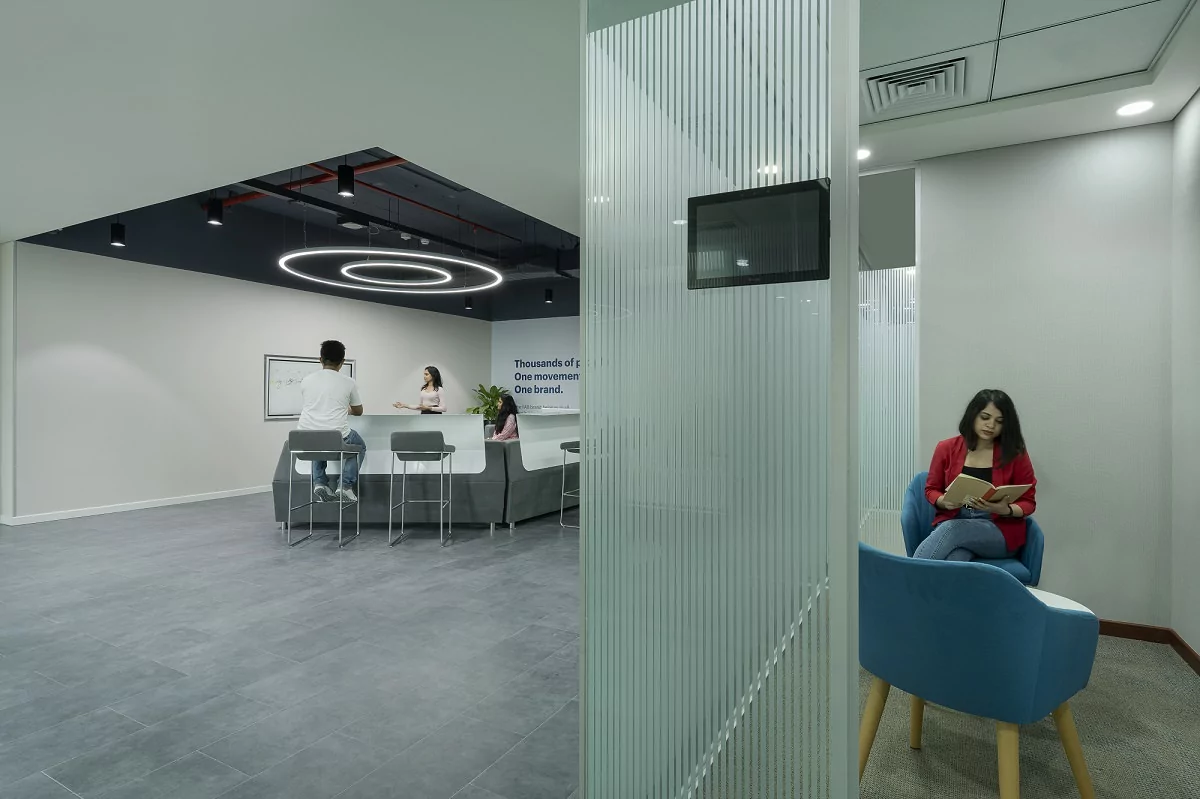05 Key Lessons Your Workplace Can Take From The Retail Industry
Workplace design is at a pivotal moment. The office is no longer a mere container for desks and computers; it’s increasingly recognized as a dynamic ecosystem impacting productivity, culture, and talent attraction. Yet, for too long, workplace design has operated within its own self-referential bubble. To truly evolve and meet the demands of a rapidly changing future, we must look beyond the familiar and draw inspiration from unexpected corners. The challenge lies in breaking free from traditional paradigms and embracing a more holistic, human-centric approach. Thus, workplace design must draw inspiration from other industries that have long mastered customer experience, adaptability, and innovation.
It is therefore time to look beyond the cubicle and take inspiration from multifaceted industries and references from around us. Let us take a deep dive into why the commercial real estate industry needs to look beyond the cubicle.
Why Workplace Design Needs to Learn from Other Industries
The post-pandemic era has accelerated the need to rethink office environments as destinations that attract employees by offering more than just desks—spaces must inspire, support well-being, and enable seamless collaboration.
Industries like retail, mixed-use development, VFX, entertainment, Gaming, and hospitality have faced similar challenges in engaging increasingly discerning consumers amid digital disruption. These industries have adapted with agility, investing in emotionally resonant experiences, cutting-edge technology, and spatial strategies that prioritize human behavior. The lessons they’ve learned are invaluable for reimagining workplaces that are not only high-performing but also deeply human.
Specifically, retail has evolved from purely transactional spaces to immersive, experiential environments. This evolution can provide a blueprint for workplaces aiming to enhance employee experience and create meaningful places of work.
Why the Retail Industry is a Valuable Source of Inspiration
The core principle remains: retail excels at understanding and influencing behavior within a physical space. However, the how has become increasingly sophisticated. Today, retail leverages data analytics, behavioral science, and cutting-edge technology to create hyper-personalized and responsive environments. This customer-centric mindset, driven by measurable outcomes, is precisely what the next generation of workplace design needs to embrace.
By viewing employees as internal “customers,” we can adopt these advanced retail strategies to cultivate more engaging, productive, and satisfying work environments.
Here’s how we can move beyond surface-level inspiration and tap into the deeper veins of retail innovation:
Lessons from the Retail Industry: Key Touchpoints

01. The Power of First Impressions & Wayfinding
The retail industry still heavily invests in aesthetically pleasing storefronts, intuitive layouts, and clear signage based on design principles and understanding customer psychology. While data can inform traffic flow, the initial emotional impact is often driven by visual appeal and brand storytelling.
Implementation
Workplace Design: Design a reception area that embodies the company culture and values. Implement intuitive wayfinding systems using consistent signage, color-coding, and potentially digital directories. Ensure clear sightlines and logical flow.
Workplace Strategy: Develop a comprehensive visitor management process that is seamless and welcoming. Provide pre-arrival information and digital tools for easy navigation. Consider the experience of new hires during their initial days, ensuring clear orientation and access to resources.
02. Behavioral Nudges & Choice Architecture
Retail design strategically employs behavioral nudges – subtle cues that influence customer behavior without restricting their choices. This includes strategically placing healthy snacks near checkout counters or using floor markings to guide traffic flow.
Implementation
Workplace Design: Strategically position collaboration zones in visually prominent and easily accessible areas to encourage spontaneous interaction. Locate wellness rooms or quiet pods in areas that are discoverable but not the default path. Use visual cues (signage, floor markings, artwork) to promote stair usage, highlight sustainable practices, or guide employees to specific resources.
Workplace Strategy: Identify desired workplace behaviors. Design interventions using subtle cues in the physical environment. Communicate the intent behind these nudges to foster understanding and adoption.
03. A/B Testing & Continuous Optimization
Successful retailers constantly A/B test different layouts, merchandising strategies, and digital interfaces to measure their impact on key metrics like engagement and sales. This iterative approach allows for continuous improvement based on real-world data.
Implementation
Workplace Design: Design flexible and modular spaces that can be easily adapted for testing different layouts, furniture arrangements, or technology integrations. Implement mechanisms for gathering employee feedback on pilot projects.
Workplace Strategy: Define clear metrics for evaluating the success of workplace design interventions (e.g., space utilization, employee satisfaction, collaboration frequency). Collect data (qualitative and quantitative) and analyze the results to inform future design decisions and optimize the workplace over time.
04. Visual Merchandising & Storytelling

The retail industry uses visual displays, product arrangements, and storytelling elements to capture attention, communicate brand narratives, and create emotional connections with customers.
Implementation
Workplace Design: Integrate brand elements through environmental graphics, color palettes, and strategically placed artifacts. Utilize digital displays to showcase company milestones, employee stories, and real-time data.
Workplace Strategy: Develop a clear internal communication strategy that leverages the physical environment to reinforce key messages and values. Curate displays that celebrate team achievements and promote a sense of shared identity.
05. Data-Driven Journey Mapping & Predictive Analytics
Modern retailers meticulously track customer movement, dwell times, and purchase patterns. This allows them to optimize store layouts, product placement, and staffing levels based on real-time insights and predictive analytics.
Implementation
Workplace Design: Strategically place sensors (occupancy, environmental) to gather data on space utilization and environmental conditions. Design layouts that allow for the easy collection and analysis of movement patterns. Consider the placement of key amenities and collaboration zones based on anticipated traffic flow.
Workplace Strategy: Define key metrics for workplace performance (e.g., space utilization rates, collaboration frequency). Use insights to optimize space allocation, identify underutilized areas, and improve the flow of people and information. Predictive analytics can inform future space needs based on team growth and project forecasts.
All in All
The retail industry’s evolution from transactional stores to immersive, customer-centric experiences offers invaluable lessons for workplace design. By embracing personalization, atmosphere, brand storytelling, flexibility, amenities, and technology, workplaces can create environments that truly support the future of work—spaces that inspire, engage, and empower employees.
This blog is part of Zyeta’s “Design Decode: Lessons Beyond the Cubicle” series, exploring how diverse industries can inform the future of workplace design.
Stay tuned for upcoming insights from mixed-use developments, hospitality, gaming, and VFX sectors.
Follow Zyeta on LinkedIn to keep abreast of this ongoing conversation on transforming work environments for the global business community.
Related Article:
Top 3 Ways to BYEB- Bring Your Employees Back
06 Strategies to Promote Circular Economy Principles in Your Workplace
As both an Architect and Architectural Journalist, he thrives on building unique content, with words and thoughts--as his brick and mortar. A natural-born explorer, he puts no limits on things he's passionate about diving into, be it cuisines, cultures or books. An avid fiction reader and a chronic over-thinker, he still finds enough time to be happy-go-lucky and easy to approach.





